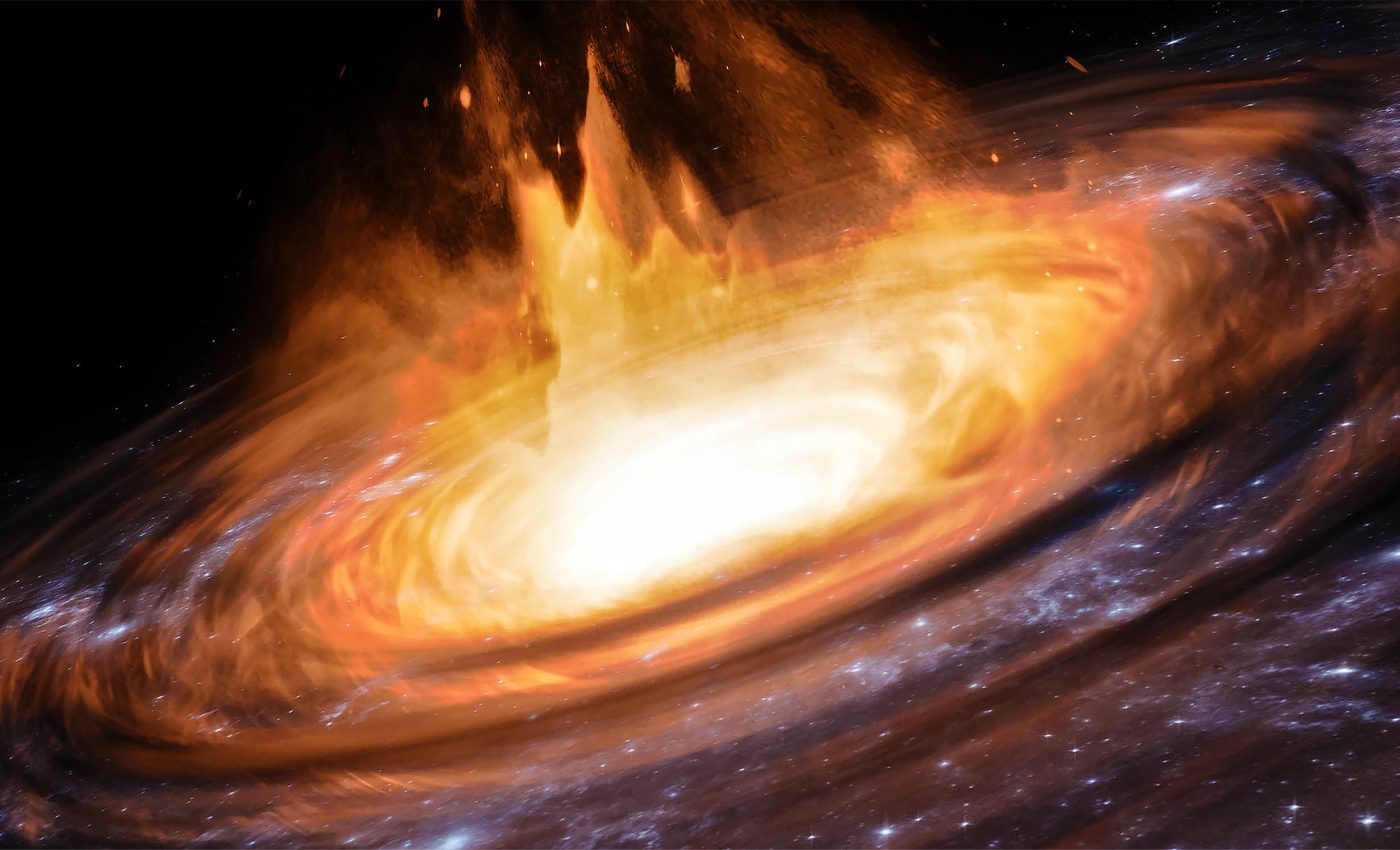
Understanding the intense X-ray radiation that surrounds black holes
For astronomers, one of the most puzzling aspects of black holes has been the intense X-ray radiation emitted from their surroundings. While many theories have surfaced since the 1970s, researchers finally have a clearer picture of what’s going on.
A new study explains how the chaotic interplay between magnetic fields and plasma near black holes produces the X-rays we’ve been detecting for years.
Deeper look into black hole physics
The fascinating part of this research lies in how the team modeled the interactions between radiation, plasma, and magnetic fields.
Associate Professor Joonas Nättilä and his group at the University of Helsinki, known for its work in computational plasma astrophysics, has managed to replicate what happens around black holes using supercomputer simulations.
This breakthrough allows us to understand, for the first time, how these extreme environments generate X-ray radiation through a chaotic dance of turbulence.
But what makes this finding so significant? In essence, the team has shown that magnetic turbulence heats up the plasma, causing it to radiate X-rays.
This radiation, a long-standing enigma in black hole studies, is now better understood thanks to their work.
Moreover, the study, published in Nature Communications, used the first-ever plasma physics model to incorporate every important quantum interaction between radiation and plasma — a feat that took years to achieve.
Studying black holes through x-rays
Black holes are fascinating cosmic objects. They’re born when a large star collapses, creating such a dense concentration of mass that nothing, not even light, can escape their gravitational pull.
As a result, direct observation of black holes is impossible, and we can only study their effects on nearby objects. That’s where X-rays come in.
Most known black holes exist in binary systems, where they have a companion star. The black hole slowly pulls matter from its partner, forming an accretion disk — a swirling mass of gas and dust.
This disk is where the magic happens. As the gas spirals inward, it heats up and becomes incredibly bright in the X-ray spectrum, which is how astronomers observe black holes indirectly.
A tale of turbulence and flares
Since the 1970s, scientists have speculated that these X-rays were tied to interactions between local gas and magnetic fields, much like the way solar flares heat the sun’s outer atmosphere.
What Nättilä’s team has now demonstrated is that the accretion disk’s turbulence is so extreme that it impacts the plasma dynamics on a quantum level.
“The flares in the accretion disks of black holes are like extreme versions of solar flares,” says Nättilä.
His team’s simulations reveal that the magnetic turbulence near black holes is powerful enough to create conditions where even quantum effects are at play. This turbulent plasma naturally produces the kind of X-ray radiation we observe.
When matter and antimatter collide
One of the most mind-bending findings from the study involves electron-positron pairs, a type of matter-antimatter interaction. Typically, electrons and positrons don’t occur together, but near black holes, the situation changes.
The high-energy environment makes it possible for these particles to coexist, interact, and even annihilate each other, transforming back into radiation.
“In everyday life, such quantum phenomena where matter suddenly appears in place of extremely bright light are, of course, not seen, but near black holes, they become crucial,” Nättilä explains.
This is a remarkable insight into the exotic world of black hole physics, where the energy levels are so intense that quantum interactions become significant in ways they simply aren’t in our day-to-day lives.
Two states of plasma: Hot and cold
One of the major revelations from this research is that the plasma surrounding black holes can exist in two different equilibrium states, depending on the surrounding radiation field. In one state, the plasma is cold and transparent, while in the other, it is hot and opaque.
This mirrors what astronomers have seen in X-ray observations of accretion disks, where the system alternates between “soft” and “hard” states.
These findings not only confirm years of observations but also provide a framework for understanding how plasma behaves in extreme environments.
The team’s simulations have made it possible to visualize how these two states manifest and alternate based on the conditions around the black hole.
Black holes, x-rays, and future research
While this study answers some long-standing questions, it also opens the door to new lines of inquiry. Understanding the mechanics of X-ray radiation from black holes is just the tip of the iceberg.
Now that we have these detailed simulations, scientists can learn more about the mysteries of black hole environments, such as the role of quantum effects in other cosmic phenomena.
For Nättilä and his team, this is just the beginning. “It took us years to investigate and add to the simulations all quantum phenomena occurring in nature, but ultimately, it was worth it,” Nättilä says.
Black holes may seem like distant, abstract phenomena, but studying them brings us closer to understanding the fundamental forces of our universe.
The more we know about these invisible giants, the more we can comprehend the workings of space-time, gravity, and the very building blocks of matter.
The full study was published in the journal Nature Communications.
—–
Like what you read? Subscribe to our newsletter for engaging articles, exclusive content, and the latest updates.
Check us out on EarthSnap, a free app brought to you by Eric Ralls and Earth.com.
—–













